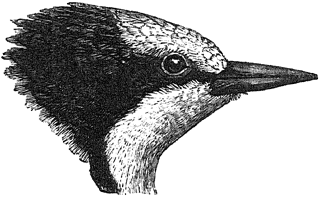|
Page 25 | prev page next page | ||
|
Genus HEMICERCUS, Swainson, 1837 Size small; bill straight, compressed towards the end, nasal ridge well marked, beginning at the base halfway between culmen and commissure and extending half the distance to the tip; nostrils covered with plumes; feet very large, hallux well developed, fourth toe longer than third; a long crest on the occiput and nape; neck very slender; tail very short, bat little exceeding the tail-coverts and only about one-third the length of the wing, the tail-feathers rounded at the end, outer pair distinctly shorter. Plumage black or dark olivaceous grey and buff. Both sexes have in the middle of the back a tuft of bristly feathers smeared with a viscid secretion having a peculiar resinous scent. Only three species are known, of which one is peculiar to Java, the others inhabit India and Burma.
Key to the Species
Coloration: Bill plumbeous grey; irides red-brown; legs and feet
plumbeous, tinged greenish (Davison). Male. Forehead and crown
crimson; coronal feathers elongate, the crimson cap tapering to a point on
the occiput; long nuchal crest, with the sides of the head and neck, chin,
throat, and breast olivaceous grey; hindneck buff; back, scapulars, wing
coverts, and tertiaries black, each feather with a buff margin and many with
a buff bar across the middle; remaining brownish black except the inner
margin towards the base, which, with the rest of the wing-lining, is buff; on
the secondaries some triangular buff spots appear on the outer webs, which
gradually increase till they become bars on the tertiaries; lower back
uniform grey; rump buff; upper and lower tail-coverts black tipped with buff;
tail black, the outer feathers barred and tipped with buff; a slight trace of
a buff line down the side of the neck; abdomen grey, with buffy-white edges
to the feathers. Female. Forehead and crown olive-grey like the rest
of the head. In the young of both sexes the crown and long nuchal crest are
ruddy buff, the feathers tipped with olive-grey; in males the long nuchal
feathers become partly crimson, as these become olive-grey the crown becomes
crimson, the passage being gradual. The whole mantle is buff with black
spots, the rump-feathers are edged with grey, and those of the lower parts
with buff in very young birds. |
| ||
|
Size: Length 5.5; tail 1.2; wing 3.4; tarsus 0.6; bill from gape 1. Distribution: The Malay peninsula, Sumatra, and Borneo, ranging north into the extreme south of Tenasserim, a single specimen having been obtained by Mr. Davison at Bankasun.
Coloration: Bill black; irides dark reddish brown; legs and feet very dark green, sometimes appearing almost black (Davison). Male. Top and sides of head with long occipital crest, nape and sides of neck, back, scapulars, upper and lower tail-coverts, and tail black, the forehead and anterior portion of crown with minute white spots; a band round the hind neck, connected with a median patch on the interscapulary tract and running forward along the sides of the neck to the chin, including the throat and malar region, buff, as are also all the wing-coverts along the forearm, the wing-lining, and the rump; quills black, margined with buff towards the base of the inner webs; tertiaries and a few of the larger and median coverts buff, each with a heart-shaped black spot near the end; fore neck, breast, and abdomen dusky olive, darker behind, flanks black. In the female and in the young of both sexes the forehead and crown are buff.
Size: Males: length 6.4; tail 1.4; wing 3.9;
tarsus 0.7; bill from gape 1.1. Females are rather smaller: wing 3.7;
bill from gape 0.9.
Distribution: Throughout the Burmese countries from Cachar in the north to Kussoom, about 150 miles south of the Tenasserim. frontier in the Malay peninsula, ranging eastward to Siam, Cambodia, and Cochin China. Also in the forests along the Malabar coast of India both below and above the Ghats from Khandala to Cape Comorin. The only place in the interior of the Peninsula whence this bird has been reported is in the Chanda forests, where Jerdon says he found it. I was on two occasions for some months each time in the forests around Chanda and certainly never saw it,. nor has it been observed in the Central Provinces since Jerdon’s time. Jerdon does not say he obtained specimens; and although he very rarely made a mistake, I think the occurrence of this species in the Indian peninsula, except in the Malabar tract, needs confirmation.
Habits: Found in pairs, sometimes in families, in forest or clearings,
usually haunting the tops of high trees. The note is peculiar, rather loud
and long, and is frequently uttered. The eggs, usually’ two in number, have
been found by Mr. Inglis in Cachar in March, by Major Bingham and Mr. Davison
in Tenasserim in December and March, and by Mr. Darling near Kussoom, Malay
Peninsula, in July: they are white and glossy, deposited on chips in a hole
made in a tree, and measure about 0.9 by 0.7. | |||
| prev page :: next page | |||
 birding.in
birding.in
| Birds | Bird Diagram | Ornithology | Indian Sites | Bird Watching | Migration | North India | Birds of India | Haryana |
All rights reserved. Copyright © 2005-2013 Birds and birding in India. Disclaimer
website: Free Java Guide & Tutorials
